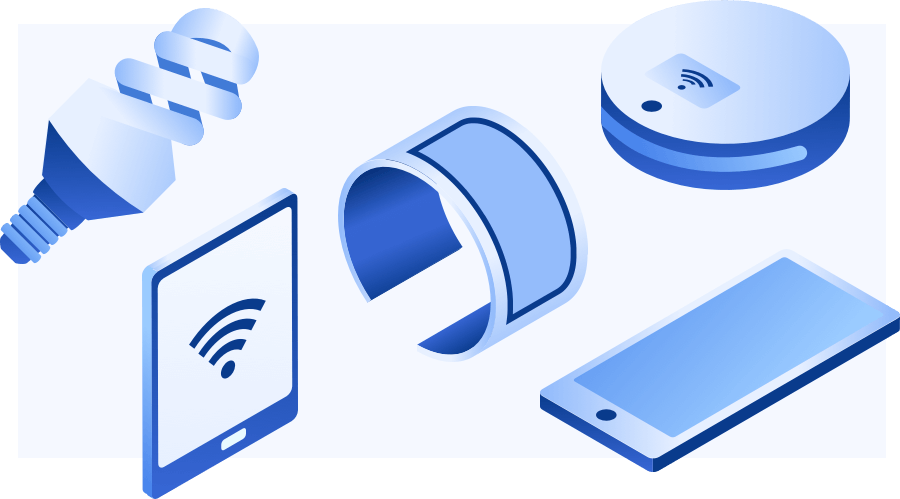Devices for Your Goals

People of all ages and disabilities are finding greater independence with smart home technology. These devices make it possible to live in your own home with increased control, productivity, comfort, connection, communication, safety, and joy!
If you’re interested in exploring how smart home technology can help YOU, begin by determining what your goals are.
Below are several ways smart home technology can help. Under each heading are some possible goals to get you thinking. If any of the listed activities sound like something you would like to do, click through to that goal page to learn what devices can support your goal.
Note: This device finder is just a starting point. There are more devices coming on the market every day. Once you have determined your goals, do your research to find a device that can help.
-
Communication
Communicate with friends, family, caregivers, doctors, emergency responders, and others using smart home technology. For example, you may be able to:
- Make calls (voice and/or video)
- Send messages (voice and/or text)
- Communicate between rooms
- Make announcements throughout your home
-
Controlling the Environment
Imagine turning on your overhead fan with your voice; locking your front door from your smartphone; or setting the thermostat to warm your home automatically when you walk in the front door.
Smart home technology can make it possible for you to control elements of your home environment with your voice, remotely through an app on your phone, and with automations triggered by other events. For example, you may be able to:
- Turn on and off your lights
- Turn on and off your fan
- Make coffee
- Adjust the thermostat
- Open and close interior and exterior doors
- Open and close window blinds
- Turn on and off some devices and appliances that plug into power outlets
-
Leisure
TV shows, movies, podcasts, music, radio… all of these may be accessible to you with the right smart home technology. For example, you may be able to:
Listen to the radio or an audiobook
Devices for Leisure
Play music and podcasts (and receive suggestions for what to listen to next!)
Get the news
Hear jokes
Watch cable TV
Stream TV, movies, and other video content -
Personal Assistant / Organization / Productivity
Get to appointments on time, organize your schedule, and stay on task with smart home technology. For example, you may be able to use smart home devices to:
- Find and follow recipes
- Make shopping lists
- Make to-do lists
- Order house supplies and groceries
- Create reminders
- Set alarms
- Manage your calendar
- Search the internet
- Check the date/time
- Check the weather
- Check public transportation schedules
-
Remote Supports from a Caregiver
Remote supports can make it possible for caregivers, family, or friends to communicate with you and support you when they aren’t nearby – and for you to communicate with them too. For example, you may be able to have:
- Remote video and/or audio check-ins from family, friends, or caregivers
- Remote view of inside or outside the property
- Remote control of the thermostat
- Remote control of a door lock and creation of virtual “keys”
- Remote communication with visitors at the door
- Remote monitoring of health vitals
- Remote alerts of intruders or hazards in the home (such as smoke, fire, carbon monoxide, water leaks, or stove left on)
- Remote alerts when medication is taken
- Remote alerts when you leave the property
*Remember: It is your choice what technology you use and how it is configured to meet your goals. Remote support technology should be initiated by you, and should not violate your privacy. If you are not comfortable with a solution, tell your team! There are many different ways to achieve the same goal.
Devices for Remote Supports from a Caregiver -
Safety / Security
Smart home technology can increase your safety and security at home. For example, you may be able to:
- Operate locks on doors
- See who’s at the door
- View outside or inside the property remotely
- Detect hazards (smoke, fire, carbon monoxide)
- Detect intruders
- Know when a door or window is opened or closed
-
Telehealth / Health Monitoring
Smart home technology and other smart devices (including smartphones and “wearables” like smart watches) can help with everything from telehealth calls with a doctor to tracking your heart rate or sleep. If your goal is to better manage your health, smart technology may be a great option. For example, you may be able to:
- Make video or phone calls with your doctor
- Organize your medication
- Set reminders to take medication or perform other health-related tasks
- Monitor your vitals (such as weight, blood pressure, blood glucose level, and more)
-
Unsure? Take a self-assessment
This self-assessment will help you determine:
- The activities you want to accomplish with smart home technology,
- How your disability might impact which devices you choose,
- The opportunities and limitations for smart home technology in your home environment, and
- Who you can rely on to be part of your support team.

